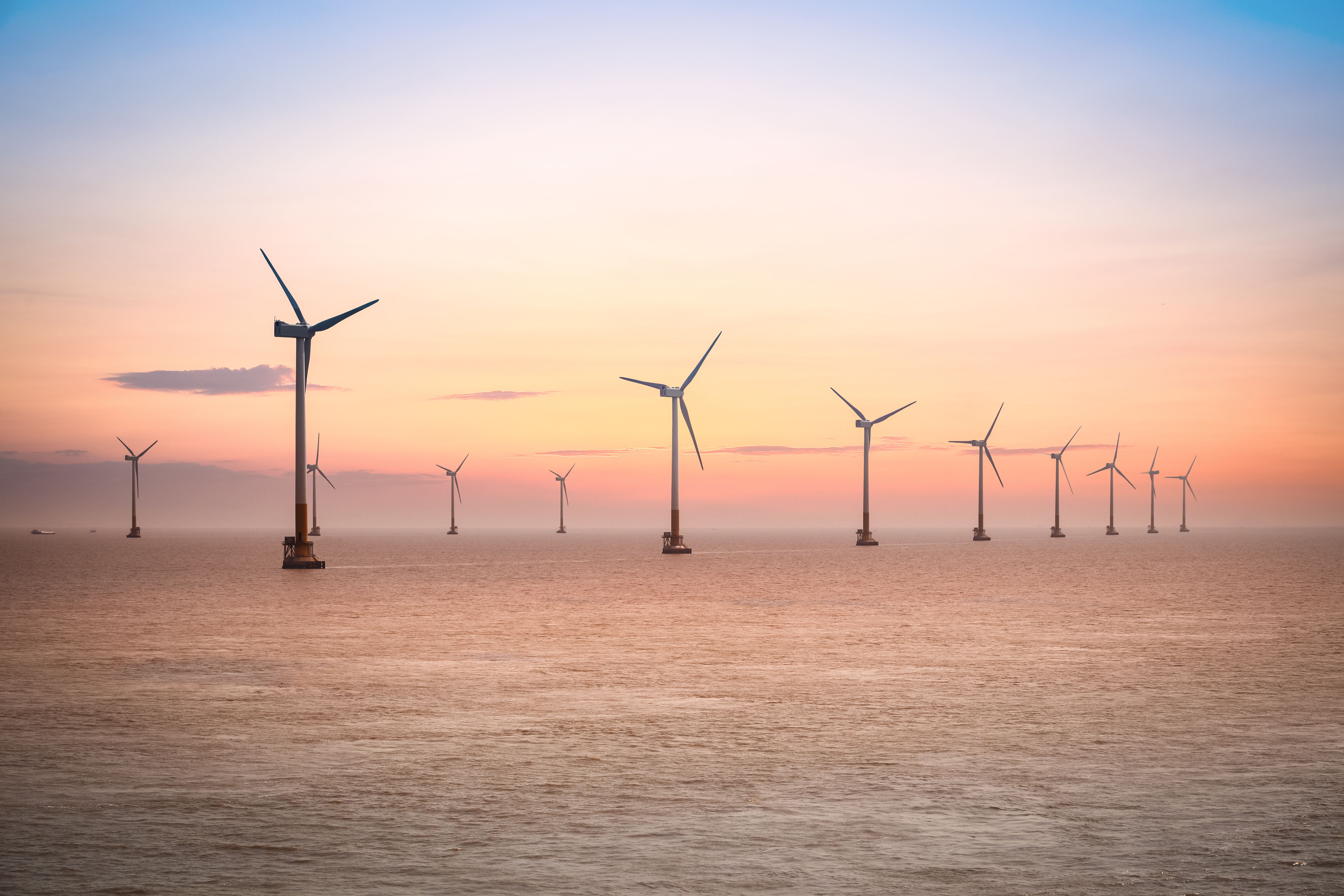
The following post was contributed to NASEO by Kent Herzog, Competitive Transmission Manager, Burns & McDonnell. Burns & McDonnell is a sponsor of the 2019 Energy Policy Outlook Conference and Mr. Herzog will speak on offshore wind development and transmission issues during the “Offshore Wind: A Giga Opportunity” breakout session on the afternoon of Thursday, February 7.
To date, offshore wind generation has not played a significant role in America’s movement toward renewable energy sources. However, that may be about to change.
Several Northeastern and Mid-Atlantic states are actively proceeding with plans to jumpstart development of offshore wind energy resources. Though these are exciting developments, a number of questions must be resolved. Near the top of the list is the need to agree on policies, common standards and technical specifications for building and maintaining an offshore power transmission grid.
Here are a few key issues the master plan must resolve:
1. Specific locations of offshore interconnections to the onshore grid.
Though there are potential interconnection points existing today, they are finite in supply and are unlikely to be adequate for all the capacity that could be built. Transmission corridors will need to be defined.
In Northern Europe, offshore wind interconnections utilize a “hub and spoke” concept where islands of wind turbines are connected to land via spokes of high-capacity cables. Another possibility could be high-capacity transmission trunk lines connecting with substations onshore. Clearly, this plan must be established now, as it will dictate the course of development in years to come.
2. Integrating interconnections to prevent congestion issues on the onshore grid.
Planning for electricity transmission is much like planning for a water transmission system, where high-volume pressure points must be identified. It is vital that the addition of offshore capacity not overload existing circuits. It would be short-sighted to not account for long-term onshore system upgrades as offshore power interconnections are planned.
3. Establishing clear responsibility for who develops transmission capacity.
It is currently expected that offshore wind developers will be responsible for constructing the new power lines to onshore locations. These “gen-tie” lines would include construction of all equipment needed to interconnect with the onshore grid. Developers would sell the capacity they generate via state-sponsored offshore wind renewable energy certificates or similar vehicles that give them the authorization to sell their power.
However, over time, this “every man for himself” strategy is likely to be unsustainable. The potential congestion issues already discussed could become a problem as more capacity is connected to the grid. It is likely that the best long-term answer may be creation of a framework where both wind developers and transmission developers work together to build a coordinated offshore power grid, much like the onshore grid we have today.
4. Establishing which entities will be responsible for managing the design and construction of transmission assets.
Here the process gets even more complicated. It will be necessary for all states – each with its own state energy policy – to develop a coordinated framework that also meets requirements of the FERC, the U.S. Department of Energy and all impacted independent system operators (ISOs) and regional transmission operators (RTOs), as well as deal with complicated cost allocation issues. While it may ultimately be best for power consumers to split transmission from generation, this will take thousands of pages of rules and regulations to document how that happens.
5. Establishing clear rules for how states and regions coordinate development plans.
To put it kindly, the states that have issued solicitations for offshore power development do not have a stellar record of working together. To date, there have been only minimal efforts on the part of these states to address interstate coordination of offshore wind transmission.
But this isn’t the only challenge. The affected ISOs and RTOs also have a stake and all share a common interest in establishing efficient wholesale power markets and grid stability. To date, these ISOs and RTOs have struggled to agree on common frameworks for offshore and even onshore transmission issues, due to variations in individual state policies and stakeholder priorities. This will need to change.
6. Regulatory framework for offshore wind generation and transmission.
All regulatory authorities and states will need to clarify rules of engagement if offshore wind generation and transmission were to be separated. The master plan is the right vehicle to do this.
The patchwork of entities with a stake in the process is enormous. It includes the FERC, NERC, the DOE, the federal Bureau of Oceanic and Energy Management, all state utility regulatory commissions, state legislatures, and even the U.S. Congress and the President. The framework for establishing routing, siting and permitting ultimately may become a federal matter, much like FERC Order 1000, which opened the transmission grid to competition but set up allocations of transmission costs in proportion to benefits received.
7. Structures for offshore project financing.
The matter of how these complicated offshore wind projects are financed also must be addressed in a master plan. Privately financed projects will require careful due diligence by investors who will want to understand all the risks likely to be encountered and whether acceptable returns are likely. If underwriters are skeptical for any reason, it is likely to result in delays or even cancelled projects. Clear and straightforward policies and standards will be critical for developers to obtain the financing they need.
Despite the complexities, the U.S. offshore wind industry is in a great position to move forward on a number of projects. Transmission has the attention of key influencers. New York Governor Andrew Cuomo recently announced plans to quadruple his state’s target for offshore wind development and specifically called for development of an offshore wind energy grid as a means to achieve this goal.
A lot of work remains but all the players have a right to be optimistic.
Photo Credit: Adobestock